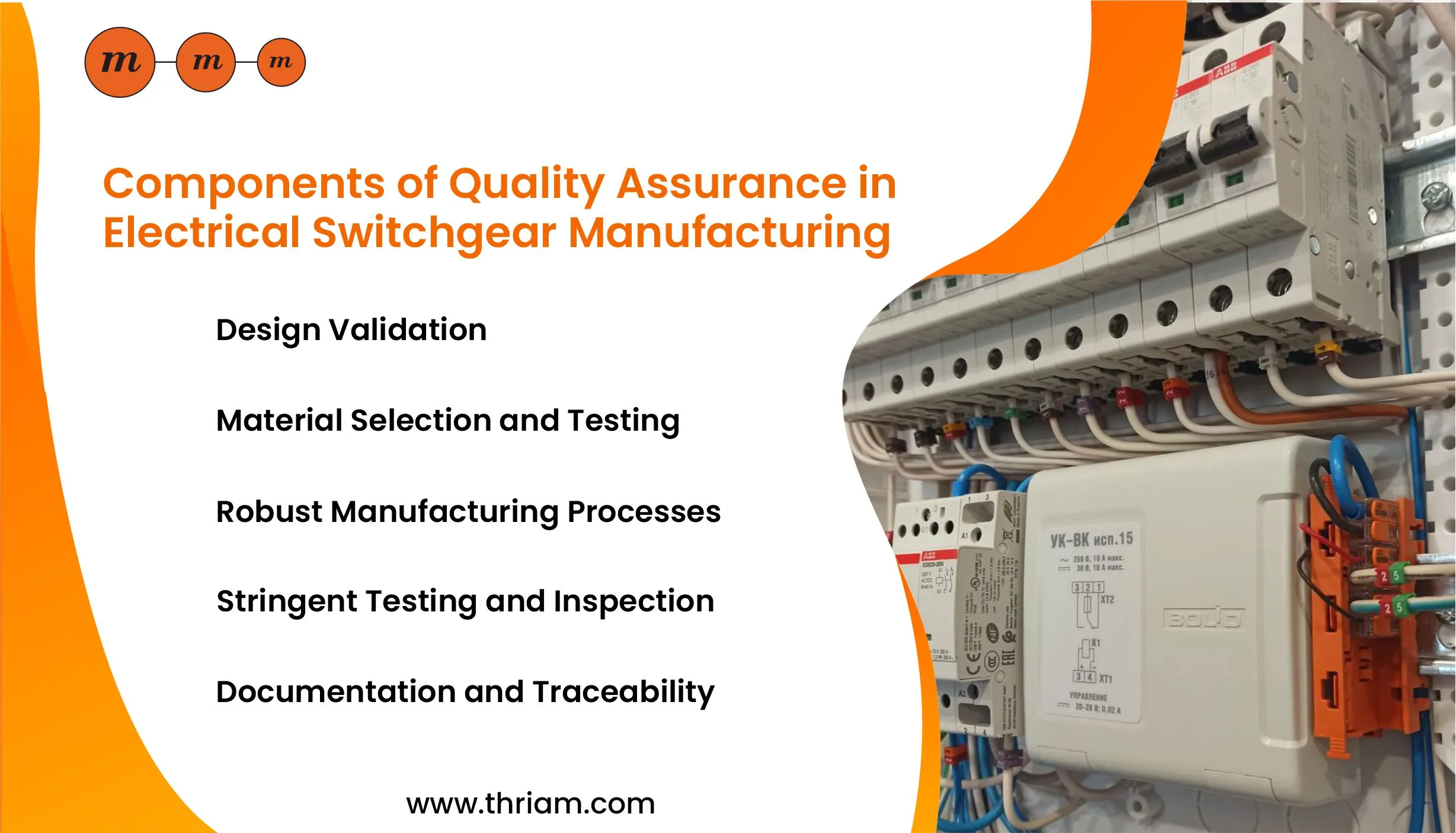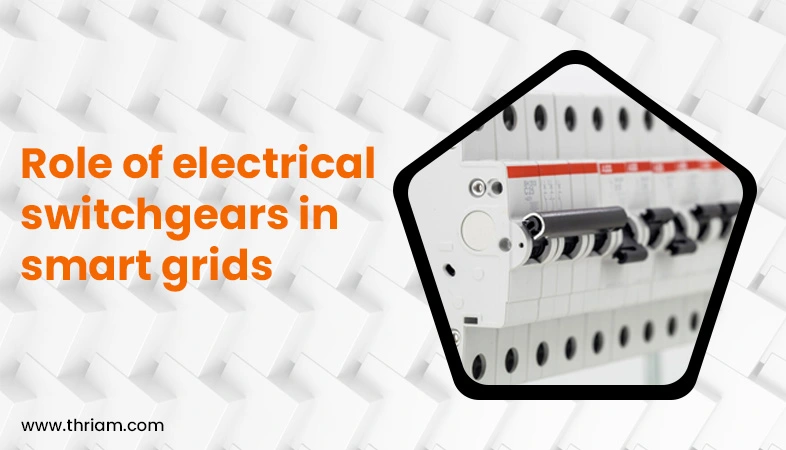Ensuring Reliability and Safety: The Vital Role of Quality Assurance in Electrical Switchgear Manufacturing

Introduction:
Electrical switchgear forms the backbone of any electrical system, providing control and protection to equipment. In an industry where reliability and safety are of utmost importance, the crucial role of quality assurance in electrical switchgear manufacturing cannot be overlooked. Quality assurance measures play a vital role in ensuring that the electrical switchgear operates flawlessly and securely. By upholding strict standards and implementing rigorous testing protocols, manufacturers can instill confidence in their products, safeguarding against potential failures or hazards. This blog delves into the significance of quality assurance in electrical switchgear manufacturing, exploring its impact on reliability, safety, and overall customer satisfaction. By understanding the critical role of quality assurance, we can appreciate the efforts taken to deliver reliable and trusted electrical switchgear to power our world.
Benefits of Quality Assurance in Electrical Switchgear Manufacturing:
Increased Reliability:
Reliability is paramount in any electrical system, and electrical switchgear is no exception. By implementing stringent quality control measures, manufacturers can ensure that their switchgear operates consistently and reliably. Quality assurance processes in manufacturing ensure that each component meets the required standards and specifications, minimizing the risk of performance issues or sudden failures. This, in turn, leads to uninterrupted power supply, reducing downtime and enhancing overall system efficiency.
Improved Safety:
Safety is a critical aspect of electrical switchgear manufacturing. Quality assurance measures help manufacturers identify potential risks and hazards throughout the manufacturing process. By adhering to industry-specific safety and regulatory standards, manufacturers can design and produce switchgear that meets strict safety benchmarks. This reduces the likelihood of accidents, electrical shocks, and fire hazards, ensuring the safety of individuals and property. Implementing comprehensive safety measures through quality assurance also promotes a culture of safety within the manufacturing facility.
Reduced Risk of Equipment Failure and Downtime:
Quality assurance involves rigorous testing of electrical switchgear components to ensure their durability and performance under various conditions. By conducting thorough testing protocols, manufacturers can identify and rectify any potential issues before the switchgear is deployed in the field. This mitigates the risks associated with equipment failure, reducing unexpected downtime and costly repairs. Users can rely on high-quality switchgear that is designed and manufactured to withstand the demands of their electrical systems, leading to increased system uptime and operational efficiency.
Enhanced Customer Satisfaction and Brand Reputation:
Customer satisfaction is essential for any business, and the electrical switchgear industry is no exception. Implementing quality assurance measures helps manufacturers deliver high-quality, reliable, and safe switchgear to their customers. Meeting or even exceeding customer expectations builds trust, confidence, and loyalty. Satisfied customers are more likely to become repeat customers and recommend the manufacturer to others, resulting in increased business opportunities. A positive reputation for delivering quality products also enhances the manufacturer's brand reputation in the industry, setting them apart from their competitors.
Components of Quality Assurance in Electrical Switchgear Manufacturing:

Design Validation:
Design validation is a crucial component of quality assurance in electrical switchgear manufacturing. It involves thorough analysis and testing of the switchgear design to ensure it meets all the necessary specifications, industry standards, and regulatory requirements. Design validation helps identify any potential flaws or weaknesses in the design, allowing manufacturers to make necessary improvements before proceeding to production. This step ensures that the switchgear is designed to perform optimally and safely in its intended applications.
Material Selection and Testing:
The selection of high-quality materials is paramount in electrical switchgear manufacturing. Quality assurance involves meticulous material selection, taking into consideration factors like electrical conductivity, thermal properties, mechanical strength, and resistance to environmental conditions. Furthermore, rigorous testing of the chosen materials ensures that they meet the required standards and can withstand the harsh operating conditions of the switchgear. By using superior materials and conducting thorough testing, manufacturers can enhance the durability, reliability, and safety of the switchgear.
Robust Manufacturing Processes:
Quality assurance in electrical switchgear manufacturing requires implementing robust manufacturing processes. This includes adhering to industry-specific standards, employing highly skilled and trained personnel, and utilizing advanced manufacturing technologies. Strict quality control checks throughout the manufacturing process ensure that each component is manufactured to the required specifications and meets the desired quality standards. Robust manufacturing processes increase the consistency and reliability of the switchgear, reducing the likelihood of defects and ensuring the proper assembly of components.
Stringent Testing and Inspection:
Testing and inspection are integral components of quality assurance in electrical switchgear manufacturing. Stringent testing protocols during and after the manufacturing process verify the performance, functionality, and safety of the switchgear. This includes electrical testing, thermal testing, environmental testing, and performance testing under various operating conditions. Regular inspection and adherence to quality control checkpoints ensure that there are no faulty or substandard components in the finished switchgear. Thorough testing and inspection procedures guarantee that the switchgear is ready for reliable operation in diverse environments.
Documentation and Traceability:
Documentation and traceability are crucial aspects of quality assurance in electrical switchgear manufacturing. It involves maintaining comprehensive records of all manufacturing processes, testing results, component specifications, and any necessary certifications or compliance documents. The ability to trace and document every step in the manufacturing process facilitates quality control, identifies any issues, and ensures accountability. This documentation also becomes a valuable resource for future analysis, improvement, and troubleshooting, further enhancing the quality and reliability of the switchgear.
Conclusion
Quality assurance plays a critical role in electrical switchgear manufacturing, delivering reliable, safe, and high-performance products. Through careful quality control measures, comprehensive testing, compliance with safety standards, and ongoing employee training, manufacturers can ensure the integrity of their electrical switchgear. By prioritizing quality assurance, manufacturers can enhance customer satisfaction, improve brand reputation, and contribute to a more resilient and efficient electrical infrastructure.



